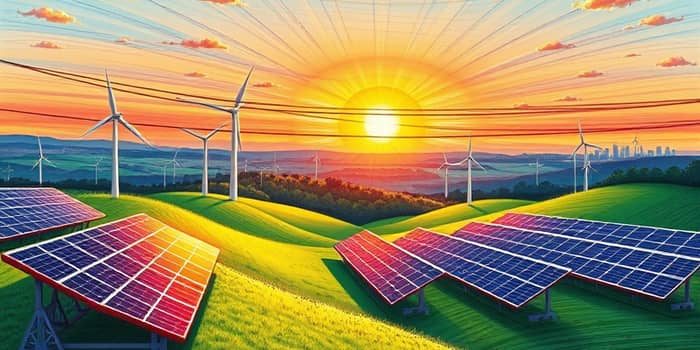
As governments and investors rally behind a cleaner future, capital flows are transforming what was once a dream into reality.
The world is witnessing a defining shift in how we generate and consume power. In 2025, total global energy investment will hit a record $3.3 trillion. This surge reflects a bold commitment to record $3.3 trillion milestone and the rapid expansion of sustainable infrastructure.
Clean energy technologies now command more than two-thirds of total spending, reaching $2.2 trillion. In contrast, investment in oil, gas, and coal has fallen to $1.1 trillion, marking the first year-over-year decline since the pandemic.
The clean energy segment spans multiple technologies and industries, each playing a role in the transition:
Solar PV leads the pack with a projected $450 billion in new investment globally. Nuclear energy follows, with over $70 billion committed—an increase of 50% compared to five years ago. Behind these headline figures lies a web of financing, policy incentives, and technological advances driving unprecedented deployment.
Policy remains the backbone of this transformation. In the United States, the Inflation Reduction Act and Infrastructure Investment and Jobs Act have catalyzed $227 billion in announced renewable projects over two years. Of this amount, $100 billion has already reached financial close.
Key incentives include tax credits for production and investment, grants for grid upgrades, and targeted support for domestic manufacturing. Globally, energy security concerns and climate commitments under the Paris Agreement are driving similar packages of support in Europe, Asia, and beyond.
China leads global investment, nearly matching the combined totals of the EU and the US. Regions like California, Texas, and Florida attract significant capital due to abundant resources and supportive state policies.
Yet stark inequities persist. Africa, home to 20% of the world’s population, receives just 2% of global clean energy funding. Bridging this gap is essential to ensure a truly equitable energy transition.
Domestic manufacturing of solar panels, wind turbines, batteries, and hydrogen electrolyzers has ramped up dramatically. Since the IRA’s passage, over $91 billion has been committed to new U.S. facilities.
This surge aims to transform supply chains and boost resilience. By 2026, domestic solar module output could be ten times higher than pre-2022 levels, securing local content and reducing geopolitical risk.
Despite momentum, several constraints threaten to slow the pace of change:
Without significant investment in transmission lines, smart grids, and energy storage, new renewable capacity could face curtailment and reliability issues. Moreover, complex permitting processes can stall projects for years, discouraging investors.
The transition demands more than new panels and turbines. Grid modernization, advanced battery systems, and carbon capture technologies must progress in tandem to maintain system stability.
Decoupling growth from fossil fuels is no longer an aspiration—it is a business imperative. Companies and governments are exploring negative-emissions solutions and smart-grid applications to optimize supply and demand.
Beyond figures and policies lies a powerful human story. Communities are gaining access to reliable power for the first time. Workers are training for jobs in solar assembly lines and wind turbine maintenance. Innovators are creating new battery chemistries that will one day outshine today’s market leaders.
Each investment echoes a deeper commitment: to protect our planet, bolster energy security, and unlock prosperity for future generations. The momentum is undeniable. With collaborative action, we can transform this surge in capital into a sustained wave of progress.
The next five years will be critical. We must continue to refine policy frameworks, streamline permitting, and channel funding to underserved regions. Technological breakthroughs in storage, hydrogen, and carbon management hold the key to balancing intermittent sources and achieving net-zero goals.
Bridging the global equity gap will require both public and private sector innovation. Blended finance models, risk-sharing mechanisms, and international partnerships can direct capital where it is needed most.
As we stand at this crossroads, the choices we make today will reverberate for decades. The record-breaking investment in renewables is more than a statistic—it is a testament to our collective will. By embracing bold strategies and ensuring inclusive financing, we can write the next chapter in humanity’s energy story: one powered by hope, equity, and sustainable prosperity.
References













